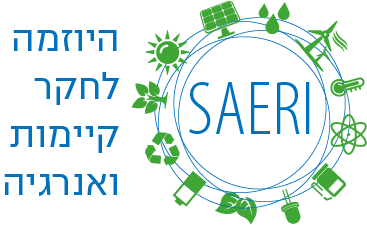מחקר
2018/19 Cycle
Collaborative Research Grants
-
Organic nanocrystalline heterojunctions for robust solar cells
Perovskite solar cells have recently become the focus of a vast research effort because of their high efficiency (as high as 20%) that is achieved using low-cost constituents and solution processing. Yet, due to structural “softness,” thermal instability, and solubility in water, reproducible fabrication of the perovskite layers and the stability of perovskite solar cells represent key challenges.
Prof. Rybtchinski and his group are addressing the fabrication challenge by studying the mechanisms of perovskite crystallization. They are tackling the stability challenge by using stable perovskite layers, as well as tailor-made new materials and creating new electrodes. They have shown how additives and surfaces influence perovskite crystallization, and used these discoveries to make better cells.
Prof. Dan Oron and his team have studied the nucleation, growth, and structural transformations of perovskite crystals at the nano-scale. His group combines fundamental studies of the photophysics of semiconductor quantum dots adsorbed on surfaces with the creation of new designs for third-generation photovoltaic cells incorporating quantum dots.
Together, their SAERI project zeroes in on understanding the dynamics of the interface between organic nanocrystals and thin films in order to create new classes of solar cells. In particular, the groups are studying CuPc-PDI (copper phthalocyanine / perylene diimide) interfaces, as their surface potential differences give rise to photovoltage upon illumination.
The interfaces and fluorescence have been studied using Kelvin-probe force microscopy (KPFM), as well as time-resolved fluorescence and transient absorption studies.
The groups have identified several promising systems that will be further studied in depth and used for fabrication of high-performance organic solar cells.
-
Two-level lasers as engines powered by ambient heat: From idea to experimental design
The experimental and theory partners are working together on the details of the experimental scheme needed to demonstrate and study the concept of heat-driven engines in an atomic system. Prof. Kurizki conducts theoretical research in quantum optics and quantum thermodynamics, rapidly developing areas of physics that take advantage of the quantum properties of light and its interactions with matter. Experimentalist, Prof. Nir Davidson, has learned to manipulate atomic motion using lasers. However, most of Prof. Davidson’s work has been with ultracold atoms. The idea of creating a laser-powered heat engine requires exploring new dimensions.
-
Can elevated CO2 compensate for climate change effects on forest sustainability?
Carbon dioxide concentrations have risen by more than 30% in the last 100 years as a result of fossil fuel burning and deforestation, and while there is concern that this can cause global climate change, plants that feed on CO2 can take advantage of this rise and improve their water use efficiency and productivity. In doing so, forests slow down the rate of human-driven increase in atmospheric CO2 concentrations, giving more time to reduce greenhouse gas emissions and prepare for climate changes. In the semi-arid zone, the CO2 effect is especially strong—but it has been largely disregarded.
Dr. Klein is one of a team of Weizmann environmental scientists who have shown that in dry regions, response to high CO2 by trees is greater than in wetter regions, and results in reduced water loss through evapo-transpiration and, consequently, conservation of water, allowing trees to grow under increasingly dry conditions. These responses, the processes underlying them, and their implications for local eco-hydrology are complex and poorly understood at present.
Prof. Boaretto’s archeological expertise and contacts have enabled the researchers to collect tree cores and meteorological data over the past 50 years in collaboration with experts in Uzbekistan. The samples are brought to the Weizmann Institute for analysis. Their goal is to better understand the longer term dynamics of climate change and its effects on the growth of forests.









